In a recent article, we compared two Glock pistols both chambered for the .40 S&W in an attempt to help our readers decide which for them would be the better fit. We pitted the larger and slightly more accurate Glock 22 against the slightly smaller but more easily concealable Glock 23.
But what if we compare the Glock 23 against another Glock pistol that has the exact same specs but is chambered instead for the smaller and faster 9x19mm Parabellum (more commonly referred to as the 9mm)? Will the Glock 23 still come out on top? I give you Glock 19 vs. Glock 23!
First let’s look at the 9x19mm Parabellum!
Table Of Contents
- The 9x19mm Parabellum
- Glock 19 vs. Glock 23 - The Tale Of The Tape
- Glock 19 vs. Glock 23 – So, Which is Better?
- Glock 19: The Better Shooter
- Glock 23: The Cheapskates’ Delight
- Glock 19 vs. Glock 23 – Pricing
- Glock 19 Models For Sale
- Glock 23 Models For Sale
- Glock 19 vs. Glock 23 – Conclusion
- Recommended Reading
The 9x19mm Parabellum
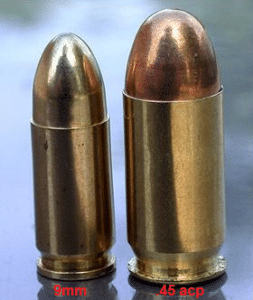
Its popularity has never diminished and until today, most countries’ law enforcement and military still use it in their sidearms and SMGs, a testament to its effectivity. Here are some of the reasons why:
- The 9mm offers superior velocity and accuracy compared to other common handgun calibers. In the image above, the 9mm appears puny next to the big fat .45 acp, but the 9mm brass is rated for SAAMI pressures of up to 35,000 psi (240 MPa), which makes it 60% stronger than the .45 acp brass that has a SAAMI pressure limit of only 21,000 psi (140 MPa).
- Since its case can withstand significantly higher pressures than most other handgun calibers, the 9mm is capable of relatively flatter trajectories at longer distances, making the 9mm rounds very accurate.
- In ballistics testing, bullets with smaller diameter often offer better penetration compared to ones with larger diameter because they’re lighter, move faster and have a smaller surface area. This is why the 9mm offers great penetration — so great in fact that it can overpenetrate.
- Since the 9mm bullet’s diameter measures only 355/1000 of an inch, the small footprint also allows for higher magazine capacities without the magazine having to be stretched longer. This is why it is not uncommon to see a ton of differently designed double-stack semi-auto pistols being marketed as “subcompacts” (i.e. they’re really tiny) that have magazine capacities of 13 rounds or so (e.g. Springfield Armory’s XD Subcompact).
Glock 19 vs. Glock 23 - The Tale Of The Tape
| Compare Firearms | G19 | G23 |
|---|---|---|
| Caliber/System | 9x19 / Safe Action | .40 / Safe Action |
| Length | 187 mm / 7.36 in. | 187 mm / 7.36 in. |
| Height | 127 mm / 4.99 in. | 127 mm / 4.99 in. |
| Width | 30.00 mm / 1.18 in. | 30.00 mm / 1.18 in. |
| Barrel Height | 32 mm / 1.26 in. | 32 mm / 1.26 in. |
| Between Sights | 153 mm / 6.02 in. | 153 mm / 6.02 in. |
| Barrel Length | 102 mm / 4.01 in. | 102 mm / 4.01 in. |
| Weight (Unloaded) | 670 g / 23.65 oz. | 670 g / 23.65 oz. |
| Weight (Loaded) | 855 g / 30.18 oz. | 880 g / 31.06 oz. |
| Trigger Pull | ~2.5 kg / ~5.5 lbs. | ~2.5 kg / ~5.5 lbs. |
| Trigger Travel | ~12.5 mm /~0.49 in. | ~12.5 mm /~0.49 in. |
| Barrel Rifling | Right Hand, Hexagonal | Right Hand, Hexagonal |
| Length Of Twist | 250 mm / 9.84 in. | 250 mm / 9.85 in. |
| Magazine Capacity (Standard) | 15 | 13 |
| Magazine Capacity (Optional) | 10/17/33 | 10/15/22 |
Glock 19 vs. Glock 23 – Frame Size
The tables above show that both the Glock 19 and the Glock 23 use the same size frame and thus, almost everything about the two is the same.
Concealability shouldn’t be an issue for both these pistols but if you want to know what your best CCW holster options are, check out this exhaustive list of holsters we created.
The only real differences between the two are the calibers they use and the maximum number of rounds that can be loaded in their respective magazines.
Glock 19 vs. Glock 23 – Ammo Capacity
The Glock 19 comes with two 15-round stock mags while the Glock 23 comes with two 13-round stock mags.
There isn’t really a world of difference between 15 rounds of 9mm vs. 13 rounds of .40 S&W. For years, both have been proven effective for self defense.
Even if you’re facing a mob of, say, five to six people intent on disemboweling you (which is very unlikely if you’re not in the military or law enforcement), 15 rounds of 9mm or 13 rounds of .40 S&W are plenty of firepower. You can always reload with a fresh mag in the event that you’ll need more.
Glock 19 vs. Glock 23 – So, Which is Better?
Since the Glock 19 and the Glock 23 are practically the same pistols, this comparison will revolve around the two different calibers they use, how effective each can be for self defense situations and how each can affect their respective gun’s handling and accuracy.
9mm vs. .40 S&W: Which is the Better Self Defense Weapon?
As mentioned in my Glock 22 vs. Glock 23 comparison, the .40 S&W is a great option for self defense. It offers the best of both the 9mm and the .45 ACP and thus is a compromise between both.
But there were a few things not mentioned in that article.
Glock 19 vs. Glock 23 – Felt Recoil
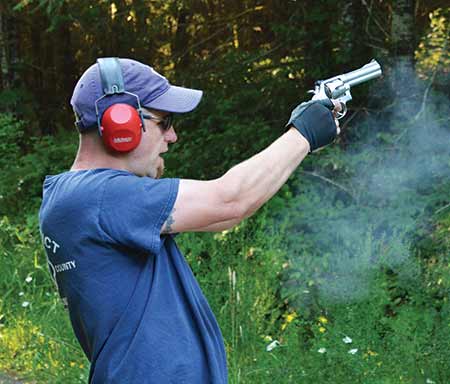
The .40 S&W tends to have a very snappy recoil. In comparison, the 9mm doesn’t have as much recoil — only comparable to a .38 Special fired in a 4-inch barrel alloy revolver. The lighter weight of 9mm bullets doesn’t “kick” like the .40 S&W’s heavier bullets.
Personally, I find the .40 S&W’s recoil to be relatively manageable, and the 9mm’s recoil to be significantly more manageable. I would further argue that both are nothing compared to the .44 magnum rounds shot through a 6-inch Taurus Raging Bull — which just kicks like a damn mule.
Even the .357 magnum’s recoil, especially when fired from a 2-inch snubnose with slim grips, is just plain unmanageable. It’s so bad that it hurts my hands after I fire 10 rounds of hot-loaded 158 grains moving at speeds of around 1,100 fps out of a short barrel.
I would be a happy camper with either the Glock 19 or the Glock 23 for EDC without worrying about recoil. But your mileage may vary.
Glock 19: The Better Shooter
If recoil is going to be an issue, the Glock 19 will always be the better option. But if you think with some range time, you can learn to handle the snappier recoil of the Glock 23, it will be the better option.
If it’s your first time to buy a semi-auto pistol and you haven’t tried shooting either caliber, go to your nearby range and try shooting their rental guns in both the .40 S&W and the 9mm to see which caliber you can handle better.
Glock 23: The Cheapskates’ Delight
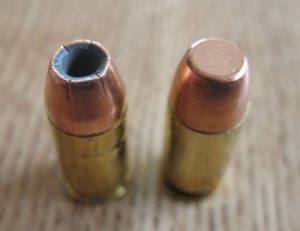
And if .40 S&W FMJs are okay, .40 S&W JHPs will be better as it makes even bigger holes compared to 9mm JHPs.
But if you’re loading your Glock 23 with FMJs, just make sure you get the flat nose (FMJ-FN) type bullets. The wider the meplat (i.e. tip of the bullet), the more violent tissue destruction, which results to faster bad guy incapacitation.
FMJs are usually much more affordable than jacketed hollow points (JHPs). If money or ammo availability will be an issue, the Glock 23 will be the better choice.
Glock 19 vs. Glock 23 – Ammo For Self Defense
There are a ton of ammo options for the 9mm and the .40 S&W.
If you’re carrying the Glock 19 or any 9mm handgun for that matter, it is highly recommended that you load it with JHPs, as FMJs tend to overpenetrate because of the 9mm’s blistering speeds.
You don’t want over-penetrating bullets hitting innocent bystanders when you have to defend yourself against an armed attacker.
FMJs for the Glock 23 will be fine in most cases, but if you have the money, why settle for FMJs when you can buy even more effective JHPs?
Speer Gold Dots, Federal Hydra-shoks and Remington Golden Sabers are some of the best ammo choices that are available almost everywhere, but you can buy any JHPs as long as they’re from reputable companies, e.g., Winchester, Blazer, etc.
Caliber Conversions
The Glock 23 can be converted easily from .40 S&W to 9mm, but the Glock 19 not so much (it’s possible to convert it to .40 S&W but it’ll be way more difficult).
If you have any of these two pistols and you want to convert to a different caliber, feel free to do so, but be informed that you will be paying for half the parts of a complete handgun (you can use the same frame but you’ll need a new barrel, a new slide, a new trigger system, new magazines, etc.) and there might be fitting involved.
We would recommend to just buy the other gun if you want a dual caliber system instead of spending more $$$ for a conversion kit as it just doesn’t make any financial sense. But if you still want to explore your options, feel free to call Glock’s customer support. You’ve been warned.
Special Mentions
If your Glock has feeding issues with JHPs (i.e. after firing the handgun, it ejects the case, and the next round in the magazine fails to feed in the barrel’s rear end) but it properly cycles with FMJs, you can try Federal’s Expanding Full Metal Jacket (EFMJ), Hornady’s Critical Defense or Corbon’s Pow’rball.
These bullets were designed to feed as reliably as traditional FMJs and expand to quickly incapacitate bad guys like JHPs.
Notes Of Caution About Ammo in Glock 19 vs. Glock 23
Glock barrels don’t play well with non-jacketed bullets (LFNs, LRNs), i.e. cast lead gas-checked bullets without copper jackets.
If you have any Glock handgun and JHP ammo in your area are too expensive that you have no other choice, buy only the jacketed ones (FMJs).
DON’T EVER buy cast lead bullets for your Glock.
Extreme Pressure Ammo
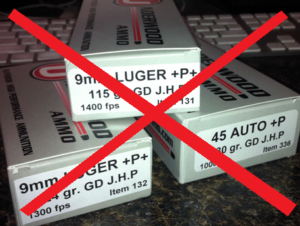
The +P designation denotes an increase in pressure, resulting in higher bullet speeds and better overall ballistic performance. SAAMI (Sporting Arms and Ammunition Manufacturers’ Institute) pegs the pressure limit for the 9mm +P at 45,000 psi (310 MPa).
To date, they have not set any specifications for a +P+ 9mm load.
I personally have never shot any +P+ rounds before, but just looking at available data online, the 9mm +P+ can get to around .357 SIG or 9×23 Winchester levels of ballistic performance. Sounds like a great idea, right?
Not really. All Glock pistol barrels are rated for +P ammo but not for +P+. Thus we can not recommend any +P+ ammo for use with any Glock pistol.
But you probably won’t listen anyway. If you’re so inclined to shoot +P+, at least get an all-steel 1911 chambered for 9mm. Here’s a list of the toughest 9mm 1911s on the market.
Glock 19 vs. Glock 23 – Pricing
Nothing much can be said about pricing. Both handguns are priced exactly the same, info taken from Glock’s website. However, when we look at what is listed on our partner guns.com you’ll a wide range of price discrepancies depending on what Gen you choose.
| Product Name | Where to Buy | |
|---|---|---|
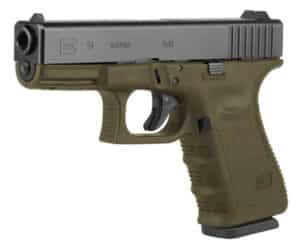 | Glock 19 | |
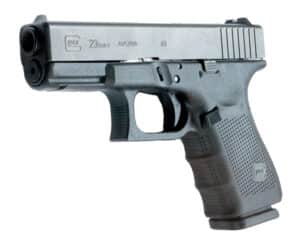 | Glock 23 |
Glock 19 Models For Sale
The Glock 19 Gen 5 variant costs ~$550, while the Glock Gen3 remains more at ~$640 base price.
Glock 23 Models For Sale
If you want to know why the Gen3s are cheaper than the Gen4s, you can find them here. If not, then feel free to jump to the Conclusion.
Glock 19 vs. Glock 23 – Conclusion
For the recoil-sensitive, we recommend the Glock 19 for the following reasons:
- It will have a milder felt recoil due to its 9mm chambering which will allow for faster follow-up shots and faster target acquisition. In self defense situations these could be the difference between life and death.
- It will also be great as a range and target practice piece as the softer recoil will make shooting a pleasurable experience for hours on end.
However, we cannot dismiss the merits of the Glock 23 for the following reasons:
- For those who have issues with ammo availability in their area, the Glock 23 will be the better choice. With its .40 S&W chambering, the user will not have to rely solely on JHPs and other special bullet designs because by default, the 40/100 inch-diameter bullet will make bigger holes.
- If loaded with JHPs, the Glock 23 will make even bigger holes than the Glock 19 loaded with JHPs.
You can’t go wrong with either the Glock 19 or the Glock 23. Both are superb choices for an everyday carry (EDC) piece and both were made by the same company known for their guns’ reliability.
Therefore, it is with great pride and a bit of dismay that we have to declare this showdown a draw. Furthermore, if you’re looking to buy one of these, or already own a model, you might want to check out this article about the best Glock 19 holster.
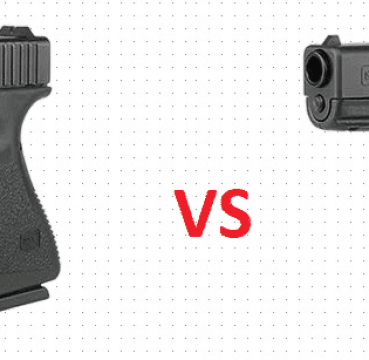


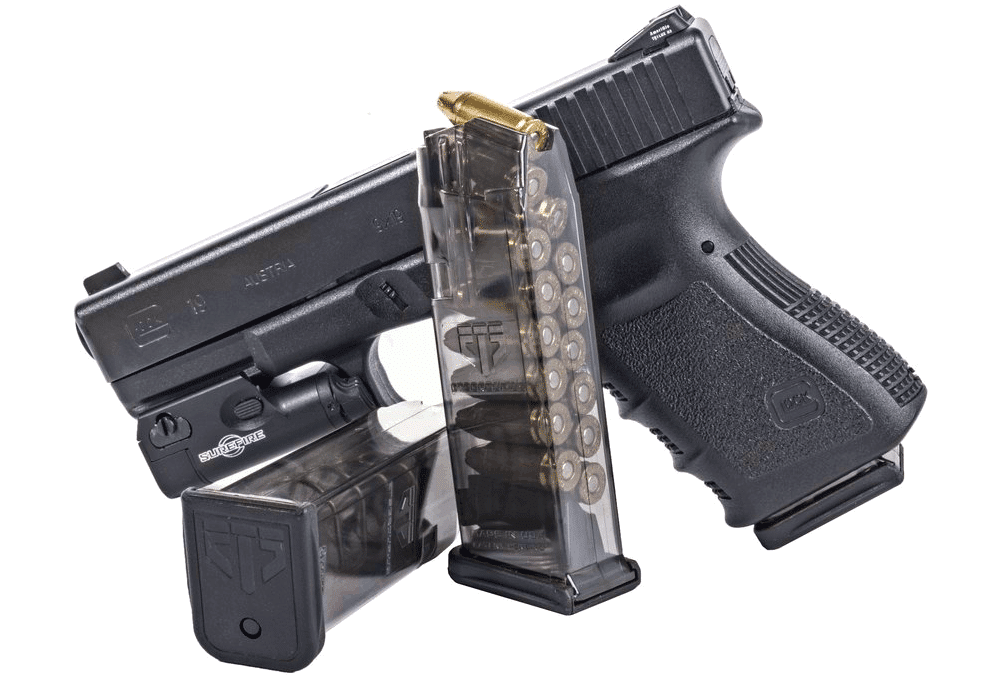
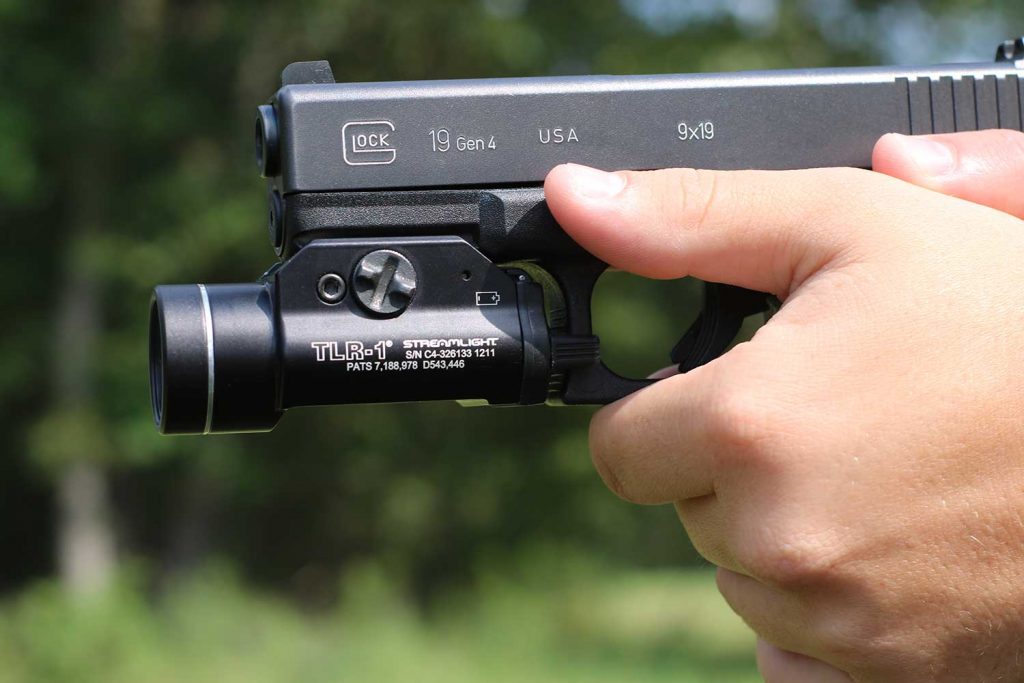
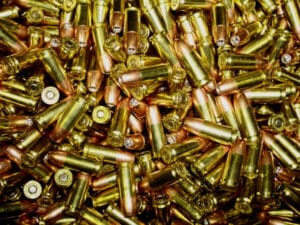

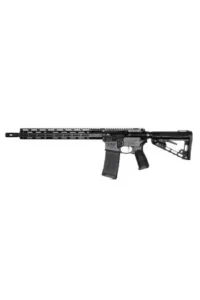
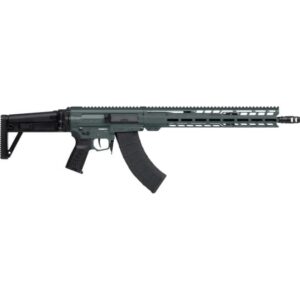
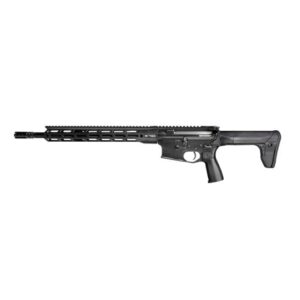
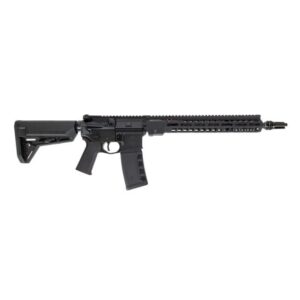





3 Responses
James,
If you’re talking bears, neither the 32 nor the 23 will be good for you. Since you already have a Glock 19, I highly suggest you look into the 960 Rowland.
If you absolutely must get a new semi-auto handgun, don’t settle for anything chambered for any cartridge weaker than the 10mm. Glock 20 would be my minimum recommendation (loaded with the hottest 10mm ammo you can find — check out Buffalo Bore and Underwood loads). Better yet, get a Glock 21 and look into the .460 Rowland upgrade.
Cheapest platform I can think of is a shotgun loaded with sabot slugs for bear.
I own a Glock 19 and I love it! I also own a Glock 43. Where I live, we have numerous black bears and large packs of coyotes, not to mention a certain number of druggies and home invaders. I wanted to know if I would be better defended with aGlock 32 or a Glock 23 than my Glock 19? Thank you.
Which is more accurate the 40S&W or the 357Sig cartridge and how do they compare in FPE, felt recoil and price of ammunition?